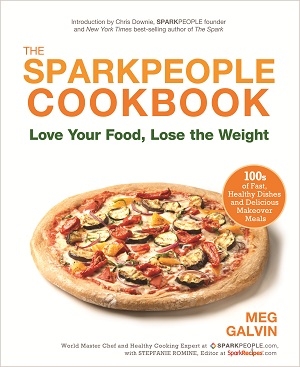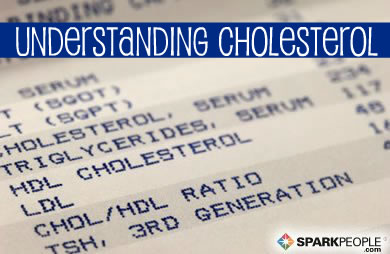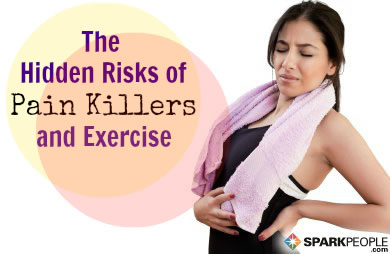|
As part of our research for "The SparkPeople Cookbook: Love Your Food, Lose the Weight," we conducted a "Ditch the Diet Taste Test." We asked successful SparkPeople members, yo-yo dieters and others to answer questions about weight loss, healthy eating, and dieting--and to pit Chef Meg's healthy, delicious recipes against traditional, bland "diet food." You can read all about the Taste Test in Chapter 2 of "The SparkPeople Cookbook," but this week we're sharing five of the diet myths we debunked as part of that project. Some people buy dresses. I buy spices. They’re my vice. To me, food isn't worth eating if it's bland and flavorless. Novice cooks might reach for fat, salt, or sugar for flavor, and they'll turn out some tasty food—but it won't be healthy. A good cook knows to start with wholesome food that’s as close to the source as possible (as unprocessed as can be), and use herbs and spices to impart flavor. Herbs, spices, and seasonings are a big reason why I can cook and eat what I love and still fit into my clothes! Unfortunately, the most common seasoning in American kitchens is salt. While salt is a crucial ingredient in many recipes, it should rarely be the sole seasoning. If a food is seasoned properly—from the beginning and through every step of the cooking process—there is no need to salt or pepper your food at the table. Diet Myth #3: When you cut back on salt and fat, you forgo all flavor in food. As you’ll read in Chapter 12 of "The SparkPeople Cookbook: Love Your Food, Lose the Weight," there are plenty of tricks you can use to impart flavor with almost zero calories. When you’re watching fat and calories, herbs, spices, and certain condiments are your new best friends. They add flavor and pizzazz to your cooking with little to no calories and fat. Do take care in your choice of premade spice blends and condiments, however, as many of the versions you get in the supermarket are full of salt—a big no-no when you’re watching your sodium levels or you have high blood pressure. You can buy tinned or canned spices at the grocery store, but many larger supermarkets and health-food stores have bulk spices. Buy just as much as you need and you won’t be left with a tin of mace 15 years from now! HOWMANYCATS, who has lost 27 pounds, has extolled the virtues of spices since her seventh-grade home ec class. “I fell in love with the school's spice cabinet . . . it just smelled so good and exotic when you opened the doors! My goal became having a spice cabinet like that some day and I'm happy to say, I do have that now!” Let’s get some terminology straight before we begin: Herbs, which can be used fresh or dried, are the leaves, stems, or flowers of plants used to flavor food. Spices are dried and come from the bark, roots, or berries of a plant. Seasoning is a term used for adding flavor with salt or a combination of spices and herbs, such as the blends found in Chapter 12 of the cookbook. Fresh and dried herbs are vital when preparing a healthy meal because they add flavor with virtually no calories and zero fat. The herbs can be the star or the supporting actor in a dish. When I make Tomato Basil Vinaigrette (page 387), the basil is the star because I want to taste that grassy, piney flavor. When I make Black-Bean Burgers with Lime Cream (page 139), I want the beans and cumin to take center stage, with the cilantro adding a light herbal flavor. In most cases, you'll want the herbs and spices to accentuate the food. Just as good lighting can make anyone look like a movie star in photos, herbs and spices can make any dish a four-star meal. If you're unfamiliar with the taste of fresh herbs, visit a farmers' market and ask for a tutorial. Make shopping for herbs a tactile experience; smell them, rub them between your fingers and, if possible, taste them. What foods come to mind? That’s a good place to start. This is a chance to be creative. We all have preferences when it comes to taste, so trust your palate and add what "sounds good" to start. You'll never know until you try. If something tastes good to you, it can't be “wrong”! If you want to be creative with herbs and spices, follow your nose. If you don’t like the smell of mint and rosemary together, chances are you won't like the taste either. If cumin and cilantro smell good, go for it! Here are some common pairings to help you get started: Parsley: cheese, eggs, seafood, vegetables, chicken, breads Mint: lamb, peas, fruit Oregano: pizza, chicken, vegetables Chervil: eggs, chicken, shellfish, summer vegetables Sage: pork, chicken, root vegetables Thyme: eggs, beef, chicken, seafood soups, root vegetables Basil: tomatoes, pasta, olive oil, cheese, fish, green beans Rosemary: mushrooms, roasted and grilled meats, root vegetables, breads Cumin: beans, spicy dishes, chicken, root vegetables Cilantro: spicy dishes, salads, salsas, fish, rice The best part about adding these herbs, spices, and seasonings? These have zero calories and no fat!  Learn more about this diet myth in "The SparkPeople Cookbook: Love Your Food, Lose the Weight." Click here to get five sneak-peek recipes, too. Do you buy into this diet myth? Why or why not? What is your favorite herb or spice? Want more healthy recipes from Stepf, me and fellow SparkPeople members? Be sure to subscribe to SparkPeople's Recipe of the Day email. Click here to sign up! Did you know SparkRecipes is now on Facebook? Click here to "Like" us! |
Popular Entries
More From SparkPeople
|




.png)
















.jpg)